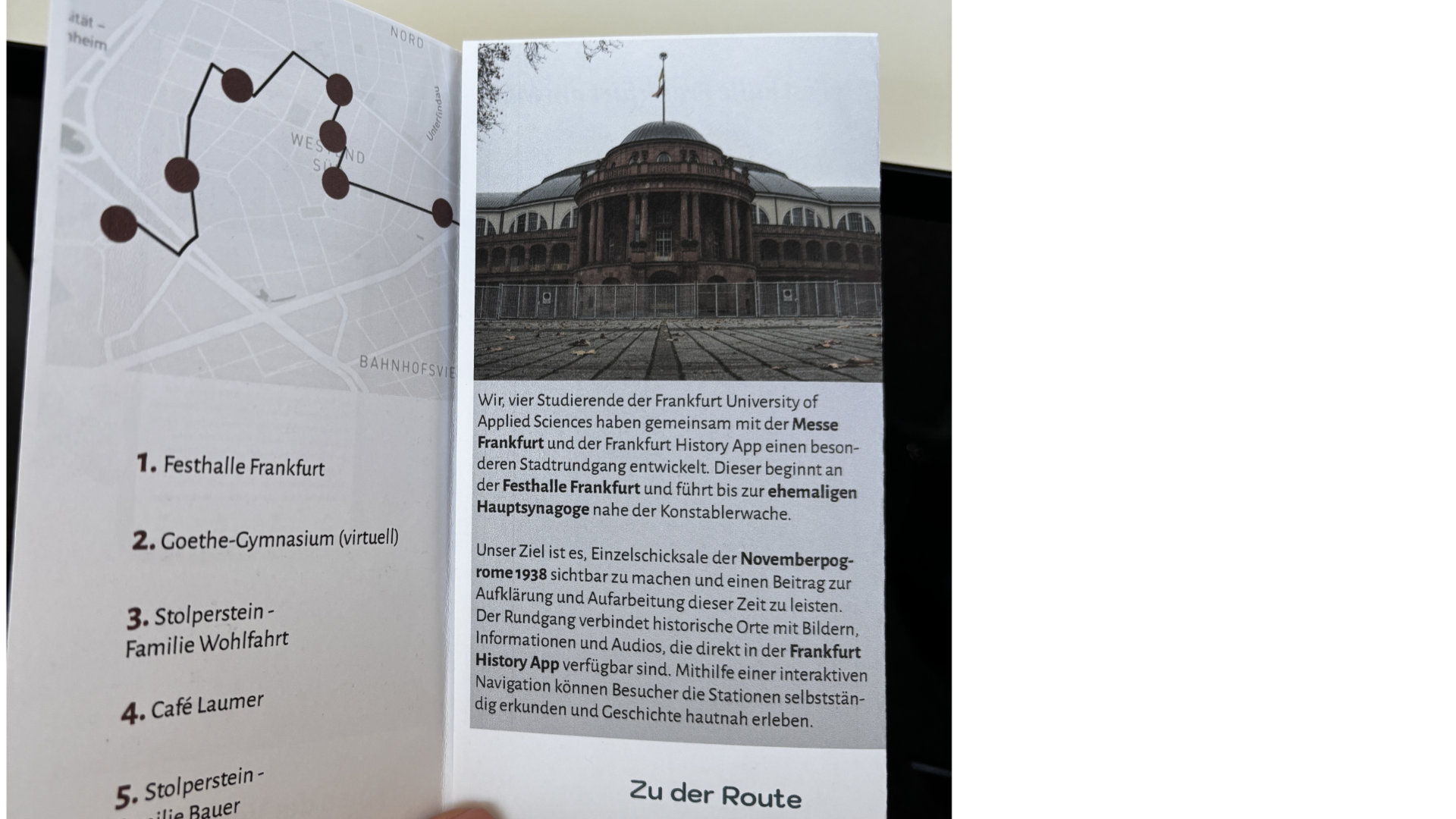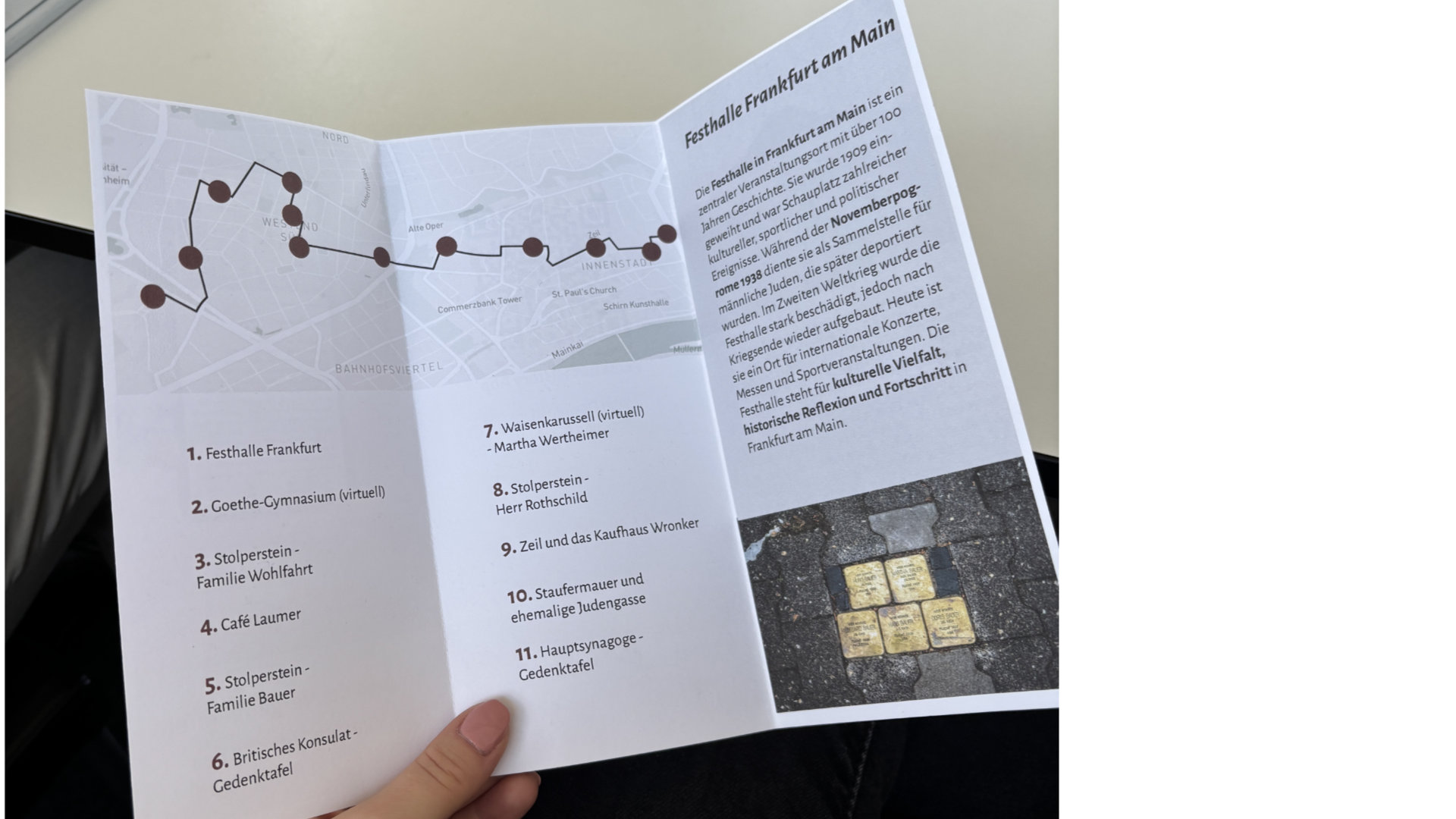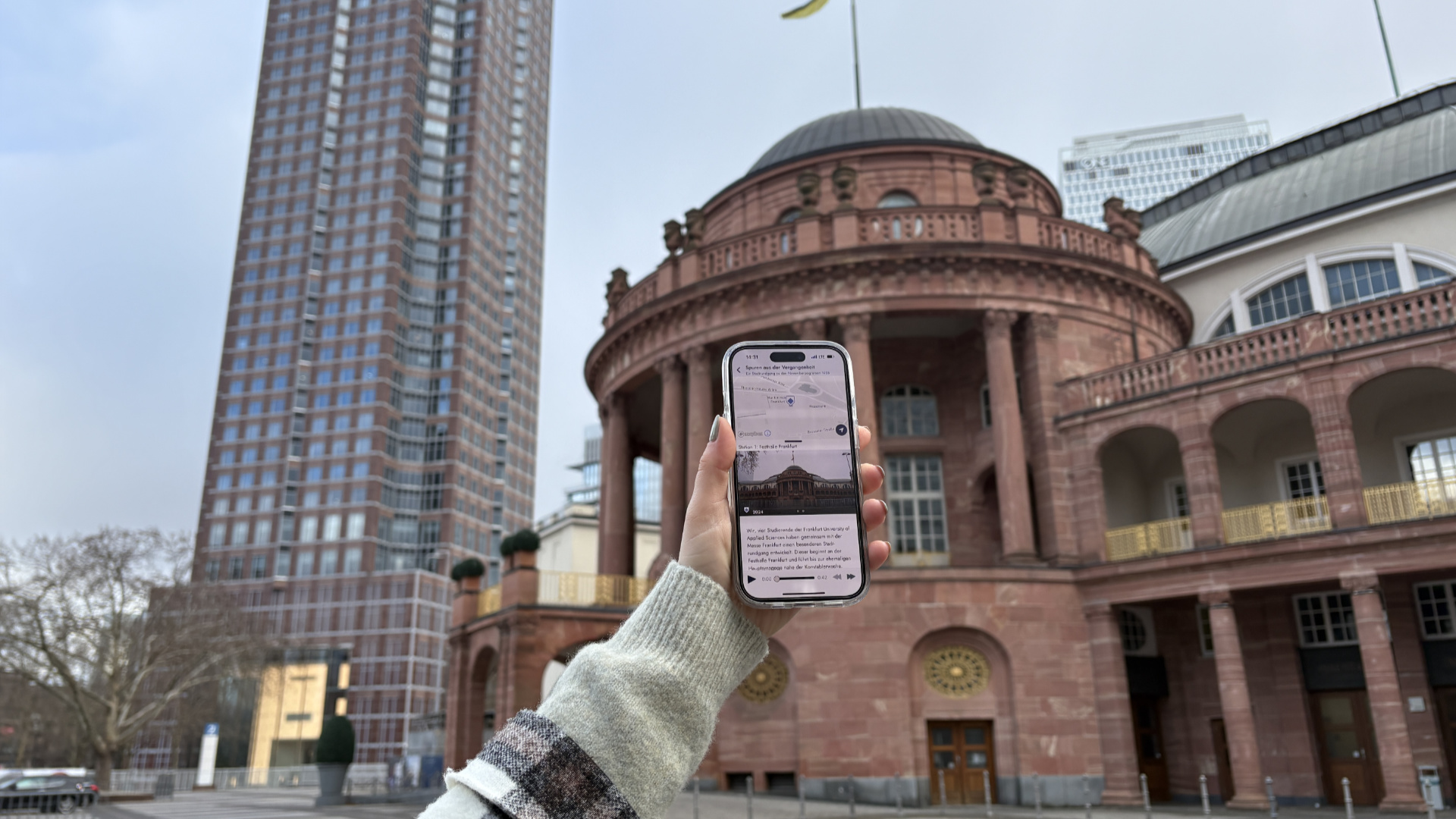
As Iris Jeglitza-Moshage, member of the Extended Board of Management of Messe Frankfurt, explains: “Here at Messe Frankfurt, we are open about our history, both good and bad. The Festhalle was one of the places in which this unprecedented collapse of civilisation manifested itself in the exclusion, persecution, expulsion and even extermination of our Jewish fellow citizens. Fascist ideology is clearly still alive and well today, and we at Messe Frankfurt will do everything we can to oppose it. Every generation is responsible for raising awareness of these atrocities and making sure that they are never forgotten. These four students have achieved this to impressive effect. Their Voices of the Past tour shines a light on the lives of Jewish people for us all to experience today.”
The Frankfurt History App recreates what happened during the November pogroms of 1938 - including in the Festhalle. The tour links historical locations with images, information and audio material that are all available directly in the app. Thanks to the app’s interactive navigation, users are able to explore each station independently and to experience history up close and in person.
The new tour, ‘Voices of the past – a tour of the city during the November pogroms’, is the result of a collaboration between the Frankfurt University of Applied Sciences, the Frankfurt History App and Messe Frankfurt. Starting at the Festhalle, the tour guides people through a total of eleven stations before ending at the site of the former main synagogue near the Konstablerwache square in the city centre. This tour makes a particularly strong impression by revealing the fates of specific individuals during the November pogroms. These are stories that can also be told from the Festhalle, as it was here that many of Frankfurt’s Jewish citizens were assembled during the November pogroms before being deported.
The project began in late October with a meeting in our company’s historical archive, where four tourism management students from the Business and Law faculty were briefed on the assignment. After this, Laura Schmidt, Aliah Habl Corona, Alisa Siegler and Victoria Schneider had around three months to develop the tour. They set to work right away, which included conducting research in Messe Frankfurt’s historical archive, at the institute for the history of the city of Frankfurt (Institut für Stadtgeschichte) and at Frankfurt’s Jewish Museum.
Victoria Schneider remembers how they got started: “We were a bit overwhelmed at first, because it really is a difficult subject.” Even so, the tremendous openness of the victims’ relatives when they interviewed them was a great help. In highlighting the stories and fates of the individual victims, the students were assisted by the Stolperstein Initiative – which places memorial stones in pavements to honour victims – in contacting their relatives.
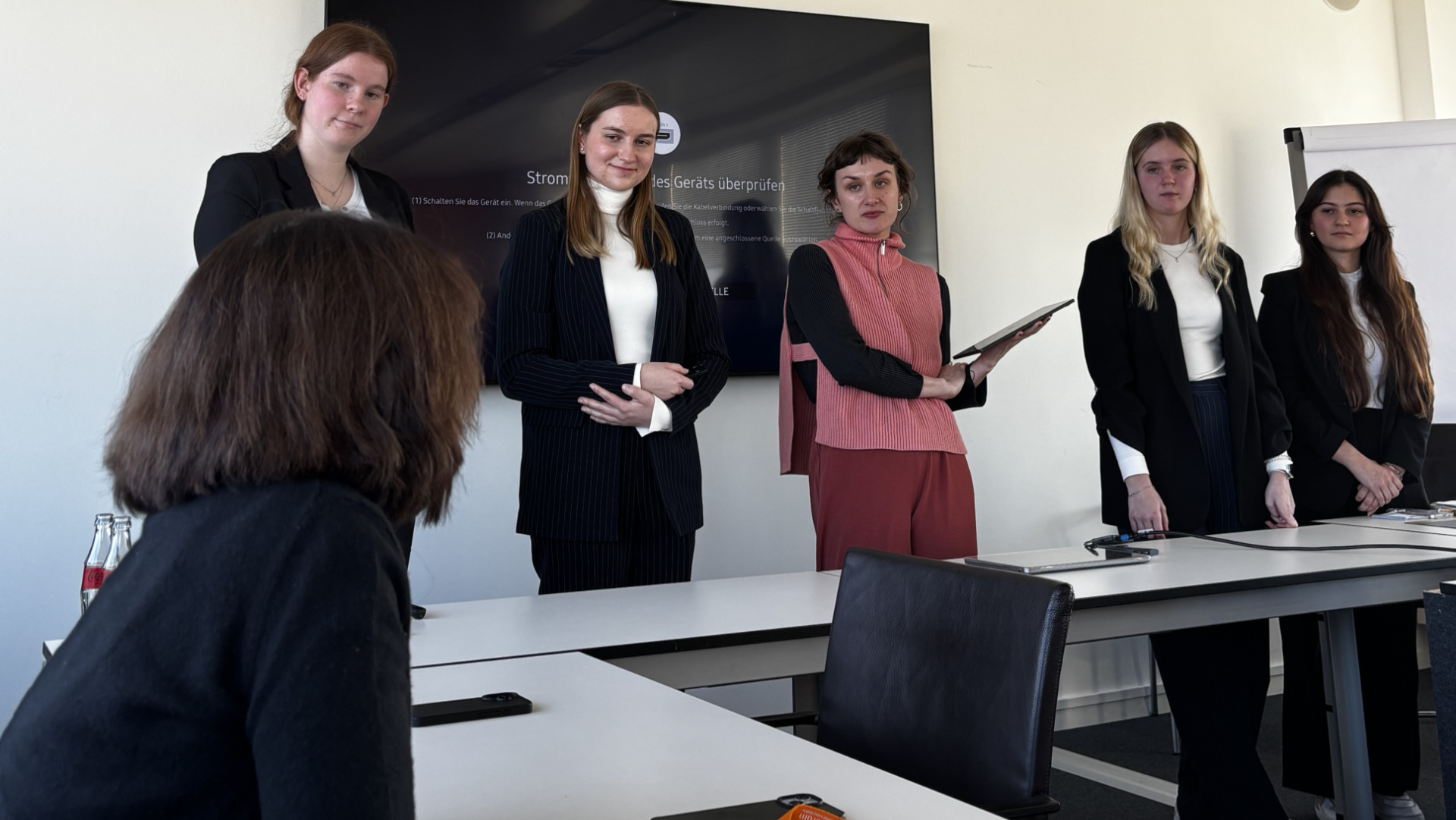
There were also weekly meetings with Katrin Ordnung, Director of Messe Frankfurt’s Protocol & Political Affairs department, and her colleague Sari Alwi-Styrnol to discuss the project. Both women are familiar with the Festhalle’s role in the November pogroms because they have been working with the Jewish Museum in Frankfurt for several months now to organise tours of the Festhalle focusing on this time. The four students also benefited from the advice of our archivist, Peter Kerwien. Katrin Ordnung sees the app as the perfect addition to the Festhalle tours: “It is ideal for anyone who wants more information about this time or who doesn’t have the time to take a tour.”
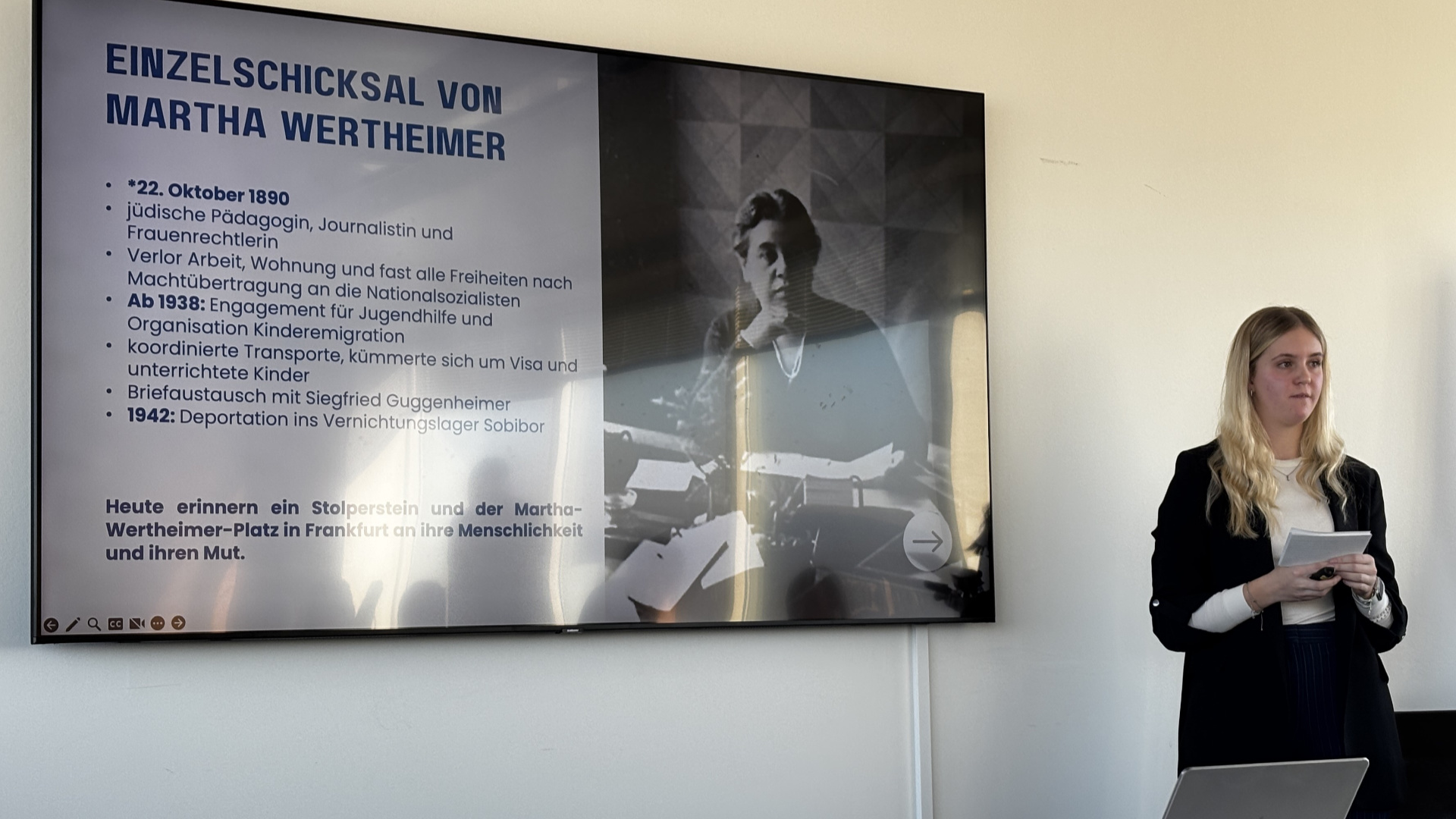
While the four students were given free rein regarding the shape that their project took, they were charged with reaching a very specific target group with their material. Victoria Schneider: “We wanted to focus on the younger generation – aged between 16 and 24 – and on tourists who are in Frankfurt for the day.” Because of this, for example, Café Laumer was included to allow these tourists to take a breather, while the details about the individual destinies of the Jewish victims were geared towards the younger generation. The students composed and spoke the text for the audio content themselves.
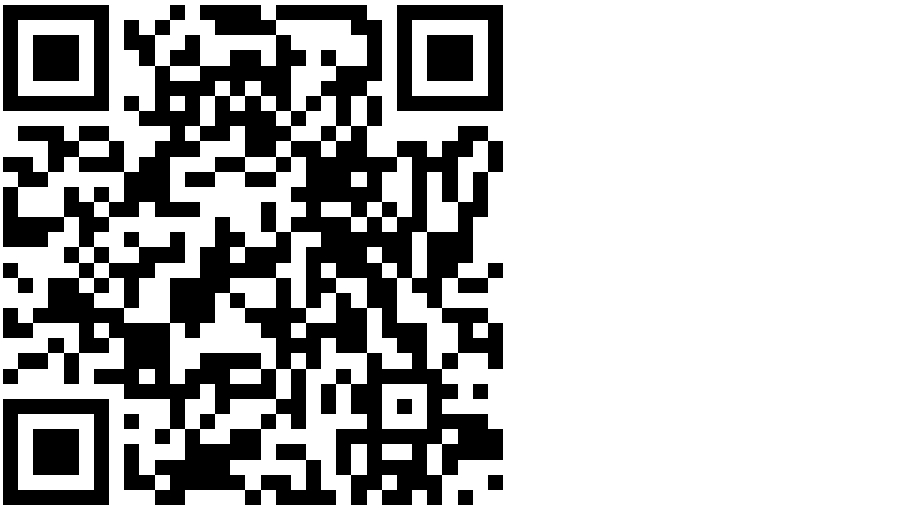
The Frankfurt History App, which is overseen by the Historisches Museum Frankfurt and has been available since 2022, also features more than one thousand other locations in Frankfurt during the National Socialism era. More information on the history of Messe Frankfurt can be found here.
Festhalle tours
In addition to the tour in the Frankfurt History App, guided tours of the Festhalle are organised regularly by Messe Frankfurt in cooperation with the Jewish Museum. Please refer to the museum’s event calendar to find out when these tours take place. To register for a tour, please send an email to fuehrungen@messefrankfurt.com.
